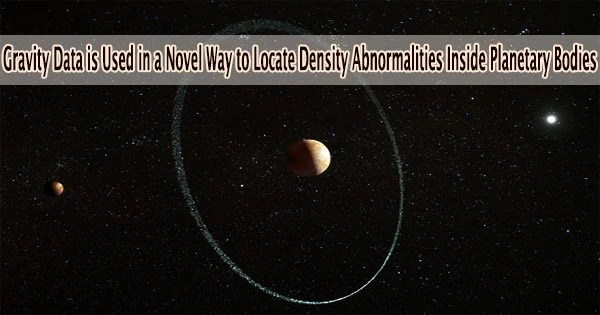Gravity data actually refers to information collected about the gravitational field of a particular location on Earth or another celestial body. In the context of Earth, gravity data is typically collected and used for various scientific, geophysical, and engineering purposes.
Getting to know planets or moons inside out isn’t easy. Many celestial bodies, like the Earth and its moon, have multiple layers and are capable of having atypical internal features that are a reflection of their complicated histories of formation, collisions with other bodies, and current planetary dynamics.
Using gravity data, anomalous structures inside planets and moons with densities that differ from their surroundings can be found. The force of gravity acting on spacecraft moving nearby is stronger or weaker than at other regions above similar density anomalies.
Gravity inversions are computational methods that link variations in gravity acceleration to variations in interior density structure.
Now, Kristel Izquierdo and colleagues present a novel technique that may help researchers infer the global structure of a planet or moon from the gravity acceleration data measured by orbiting spacecraft. The findings are published in the journal Earth and Space Science.
The new method, known as THeBOOGIe (short for transdimensional hierarchical Bayesian object-oriented gravity inversion), allows for more flexibility in the input of known geological and geographic data in comparison to conventional methods and does not require researchers to input information on a known internal density interface or a depth range of interest.
TheBOOGIe uses a Bayesian statistical method and starts with a model of a planet’s or moon’s interior that is produced at random. millions of millions of iterations are used to develop the model until it best matches the input gravitational, geological, and geographic data.
In order to estimate the moon’s internal structure using synthetic input gravitational data that were representative of actual lunar data, the researchers evaluated the method. They discovered that the method accurately located and measured the width of density anomalies throughout the lunar crust and mantle. However, it overestimated the vertical thickness of crustal anomalies.
The researchers point out that THeBOOGIe is ideally suited for completing models of planetary interiors based on seismic data and for figuring out the internal properties of smaller bodies without a completely stratified structure.
They highlight that THeBOOGIe could be improved through further research. They also point out that the flexibility, statistical strength of THeBOOGIe may help scientists visualize the interiors of planets and moons for which seismic, and geophysical data are lacking.
















